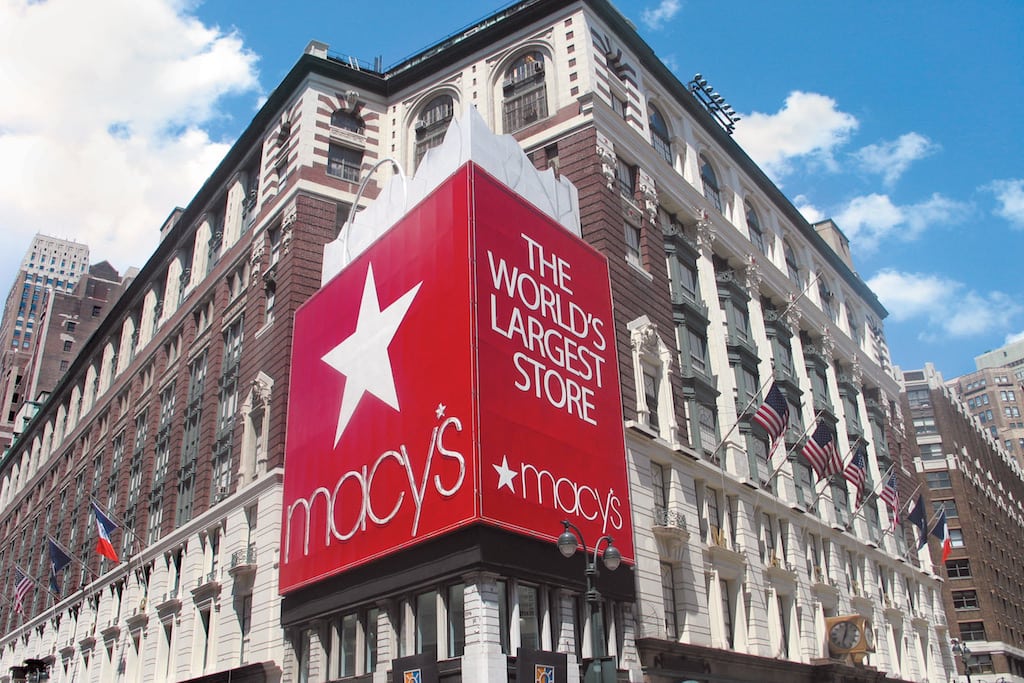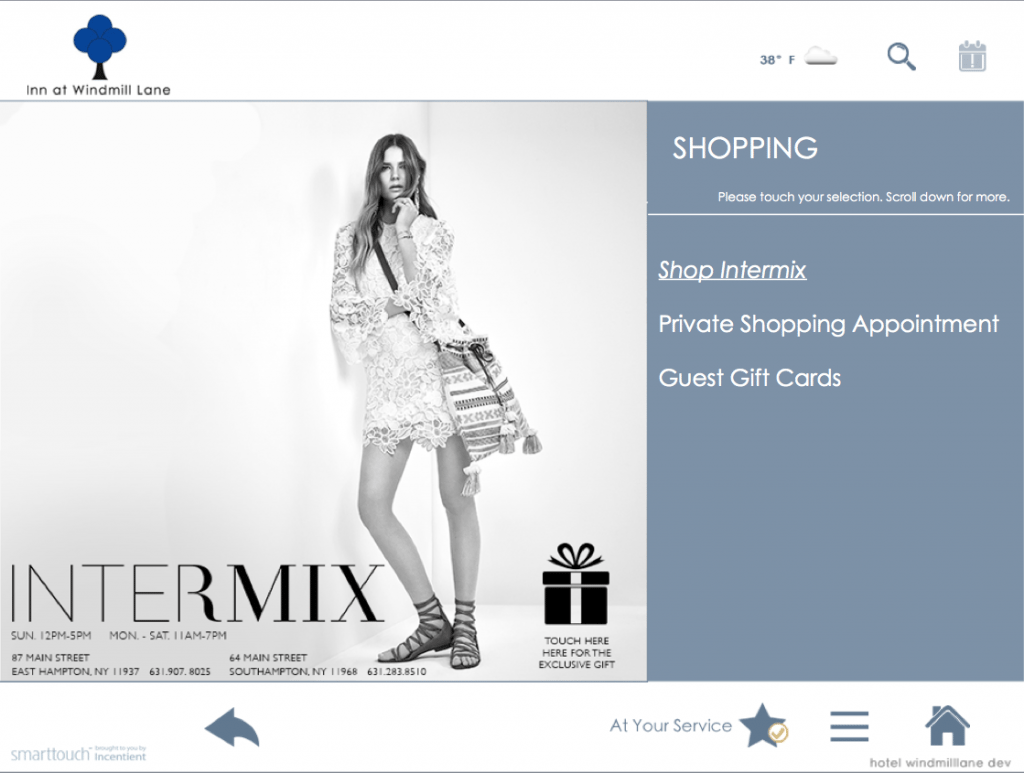Skift Take
No two tourists' shopping behaviors are alike and from tailored shopping tours to in-room services targeting specific groups and interests the mission to drive trip spending has only just begun.
Bringing home beautiful souvenirs, unique foreign designer handbags and other fashions isn’t just a line item on a to-do list for some foreign tourists visiting the U.S.—for many it’s the chief reason they travel in the first place.
Before even catching that first glimpse of the Statue of Liberty or Golden Gate Bridge, foreign tourists increasingly head to shopping malls or iconic stores where luxury brands grace the shelves. They’re looking for deals and brands they may not have available back home and they’re willing to generously spend to satisfy their wish lists, provided the exchange rate makes that a smart move.
Many also want a local shopping experience that reflects the destination they’re visiting.
Feit, an Australian boutique shoe store with locations in Sydney and New York City, has observed current tourist shopping trends since opening last November and during that time watched the dollar perhaps price some tourists out of otherwise buying their handmade leather footwear and other accessories.
The store’s products are special in that they’re not produced en masse in a factory but rather in small batches and then shipped directly to the store to minimize environmental impact and ensure quality.
“Our international customers can tell that the product is handmade before they even walk in the store,” said Mani Motarjemi, a manager of the New York City store. “I think our domestic customers are just starting to become interested in products that aren’t mass produced and paying more attention to craftsmanship in the last few years.”
“The only thing that has had an impact recently on our business is the fact that the dollar is getting stronger so there is not too much incentive for travelers to be dropping hundreds of dollars when they come to the U.S.”
Located in Manhattan’s NoLita neighborhood, away from the more touristy shopping mecca of midtown, the store receives ample foot traffic from locals and tourists alike looking for something different and a story they can feel proud of. “It is 50/50 in terms of local and tourist customers,” said Motariemi.
The Iconic Tourist Shopping Center
Tourists pop into Macy’s flagship Herald Square store in New York City without any prompting due to its icon status and featured annual appearance on the nationally televised Macy’s Thanksgiving Day Parade.
Unlike Feit, tourists shopping at Macy’s search for well-known brands they’ll brag about to friends and family and also use the store as a launching point for the rest of their New York City vacation. With the new co-branded Macy’s and NYC & Company (the city’s destination marketing organization) flagship New York City Visitor Center located on the mezzanine level the store has morphed itself into a shopping and tourist information nerve center.
The visitor center opened in 2013 and is part of an overall $400 million renovation to the flagship store which will add an additional 100,000 square feet of selling space, bringing the total space to 1.2 million square feet of retail.
Staff are on-hand to answer questions as well as help tourists use touch-screen information kiosks featuring Google maps and the ability to print directions in nine languages, several guides and maps and tickets for various attractions.
NYC & Company estimates domestic visitors to the city spend $537 per person per trip, on shopping and other trip expenses, and more than $19 billion annually while international visitors, the bigger spenders, typically spend $1,815 per person per trip and more than $17 billion each year. Shopping also ranks as the most popular activity for both markets visiting the destination.
The Rise of Shopping Tours
Shopping tours aren’t a tourism novelty but they’re definitely growing more common as tourists look to experience local products and fashions after they’ve enjoyed their classic experience at a place like Macy’s, which offers its own tours.
A quick TripAdvisor search for shopping tours and attractions in New York City yields hundreds of results, including one for Convoy, a startup shopping tour company. Convoy leads both tourists and locals on small group neighborhood shopping tours and co-founders Richie Siegel and Blair Smith understand the changes rippling out from the traditional New York shopping experience. They custom craft every tour they lead based on participants’ interests, meaning no two tours are the same.
“The main difference between our shopping outings and a historical tour of a neighborhood is that our outings require the client to be active,” said Smith. “One could go on a normal tour and simply listen and keep up with the group. But for our outings, there’s a higher level of participation required, whether you’re interacting with the guides, sales associates or the clothes.”
“The beauty of our format is that on the fly we can adjust just how deep we dive in. We give the backstory and some interesting facts before each stop—we consider it a primer—because it’s always better to know what you are walking into. We’ve found that the story builds an emotional connection between the clients and the merchandise. We source our roster of shops from a highly curated and selective pool—and our clients know this—so their curiosity only grows as they walk into a store with an informed perspective.”
Crafting a Shopping Tour For All Travelers
Smith also said her and Siegel have had a mix in terms of tourist and locals and budget and luxury shoppers on their tours which has influenced the stores they visit:
“So far, we’ve found great success right in the middle, with a healthy mix of affordable and higher-end price points,” said Smith.
“We believe that this is the reality of most shoppers, in which they spend more on some items but are more conservative on others. Shoppers who seek the most expensive item in each category are an immensely small group, and we haven’t come across any of them yet. Additionally, many of the stops on the outing have a range of prices, so there’s often something for everyone. We don’t want to price anyone out, and avoid doing so by selecting stores that are based off of a short questionnaire we collect from participants beforehand. The goal is always to find spots right in their range price-wise, but push them a bit on the style side.”
“Some [stores] got what we’re doing right away, while others were more skeptical. A few of the stores were initially concerned that we might overwhelm their sales associates or ask them to help our tours and ignore someone they were already helping, but we’ve proven that this never happens.”
“We’ll visit certain spots during quieter hours or work with stores in other ways to make the experience as seamless as possible. We’re on the same team, so it’s been pretty great to work with many of the leading designers and boutiques in the city.”
New Hotel Technology Aims to Boost Shopping
The focus on shopping isn’t exclusive to New York, of course, and technology can quickly improve the experience on a national scale. As hotels get smarter about growing revenues they realize the time guests spend in their rooms isn’t down-time for marketing—it’s perhaps the best opportunity to fuel spending inspiration for local shopping.
That’s why hotels such as Wynn Las Vegas decided to implement a service like Incentient, an in-room technology company that sells a digital service to hotels targeting guests’ shopping interests and shows them fashions available in stores on-property and the local community.
Here’s a screenshot of Incentient at the Inn at Windmill Lane on Long Island, New York:
It works on the room TV or guests’ devices by sending targeted ads in 150 languages based on personal interests and also the demographic of the guests in the room. Guests can choose their style and work with a personal stylist from a nearby store via an iPad. When guests arrive in the store, associates already have their preferences available and know exactly what they’re spend potential is and what products they’re interested in.
“For years the in-room magazine was wasted on people who don’t speak that language or on people who aren’t interested in exactly what’s in the magazine,” said Jennifer Martucci, CMO of Incentient. “With our product there’s no waste in advertising and the corporate office of a store brand is key in alerting local stores to our campaign efforts or promotions.”
Martucci added she’s not sure how guests’ spending has been impacted at the properties Incentient is at since it was implemented. Other hotels using Incentient include MGM, Caesars, Westin, Oberge Resorts, Leading Hotels of the World and Relais & Chateaux and it’s also in San Francisco International Airport’s Delta Sky Club.
The Daily Newsletter
Our daily coverage of the global travel industry. Written by editors and analysts from across Skift’s brands.
Have a confidential tip for Skift? Get in touch
Tags: shopping
Photo credit: The Macy's Herald Square and NYC & Company Visitor Center opened in 2013 and offers tourists a bevy of incentives. Macy's

